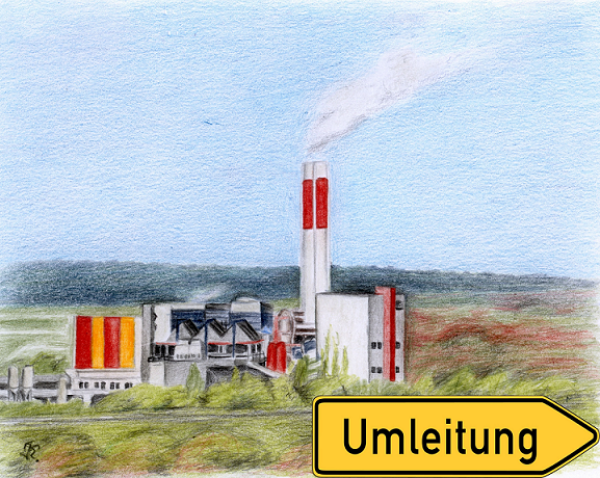meta data for this page
This is an old revision of the document!
Chapter 6 - NFR 5 - Waste (OVERVIEW)

Source category NFR 5 - Waste is not a key source. NMVOC and PM,,2.5,, emissions from Solid Waste Disposal on Land, NH,,3,, emissions from Composting and Anaerobic Digestion at biogas facilities, emissions from Cremation as well as NMVOC emissions from Domestic & Commercial Wastewater Treatment are reported.
Germany has a large number of waste incineration plants, whose emissions are reported in NFR 1, because German legislation requires energy recovery. Therefore, waste is also part of the German Energy Statistic as well as the National Energy Balance.
In addition to the “classical” municipal waste incineration, there are also various types of combustion installations, like co-incineration of “replacement fuels” in conventional power plants or industrial plants. The increasing number of co-incineration plants is mainly due to the landfill ban of untreated waste in 2005 and the introduction of the emission trading scheme (ETS). Further information about the methodology of municipal waste incineration, co-incineration in public power plants and emissions from waste wood combustion is available in chapter: 1.A.1a -Public electricity and heat production. Municipal waste incineration does also include clinical waste, which is not incinerated separately.
Emissions from hazardous waste incineration plants are reported in source category 1.A.2.g. viii - Stationary Combustion in Manufacturing Industries and Construction: Other Production as well as co-incineration in industrial plants, whereas emissions from sewage sludge incineration are reported in source category 1.A.1.c - Manufacture of solid fuels and other energy industries , following the structure of the National Statistics.
In Germany, “Other Waste Incineration” (NFR 5.C.1.b vi) is prohibited by law, therefore, “NO” is used as notation key.
Furthermore, it should be mentioned that all emissions originating from biogas recovery are reported in source category 1.A.1.a , following the structure of the National Energy Balance. That covers emissions from sewage gas as well as landfill gas and biogas from biological waste treatment.
NFR 5 consists of the following sub-categories:
| NFR Code | Name of Category | State of Reporting |
|---|---|---|
| 5.A & 5.B - Biological Treatment of Waste | ||
| 5.A | Biological Treatment of Waste - Solid Waste Disposal on Land | |
| 5.B.1 | Biological treatment of waste - Composting | |
| 5.B.2 | Biological treatment of waste - Anaerobic digestion at biogas facilities | |
| 5.C - Thermal Treatment of Waste | ||
| 5.C.1.a | Municipal Waste Incineration | considered in 1.A.1.a |
| 5.C.1.b i | Industrial Waste Incineration | considered in 1.A.1.a & 1.A.2.g viii |
| 5.C.1.b ii | Hazardous Waste Incineration | considered in 1.A.2.g viii |
| 5.C.1.b iii | Clinical Waste Incineration | considered in 1.A.1.a |
| 5.C.1.b iv | Sewage Sludge incineration | considered in 1.A.1.c |
| 5.C.1.b v | Cremation | |
| 5.C.1.b vi | Other waste incineration (please specify in the IIR) | NO |
| 5.C.2 | Open Burning of Waste | |
| 5.D - Wastewater handling | ||
| 5.D.1 | Domestic & Commercial Wastewater Handling | |
| 5.D.2 | Industrial Wastewater Handling | |
| 5.D.3 | Other Wastewater Handling | NO |
| 5.E - Other Waste (please specify in IIR) | ||
| 5.E.1 | Other Waste: Mechanical-biological Treatment of Waste | GHG emissions only |
| 5.E.2 | Other Waste: Building and Car Fires | |
NOTE: Within category 5.C - Waste incineration, Germany only reports emissions from NFR 5.C.1.b v - Cremation and NFR 5.C.2 bonfires etc.. For all other sub-categories of NFR 5.C, as all waste incineration in Germany is carried out with energy recovery and in order to avoid double counting, resulting emissions are reported as not occuring (NO) under NFR 5.C but are included in energy sector NFR 1.
++ Visual overview
Chart showing emission trends for main pollutants in NFR 5 - Waste: gallery size="medium" viewer="yes" : IIR_2020_NFR5.PNG gallery

